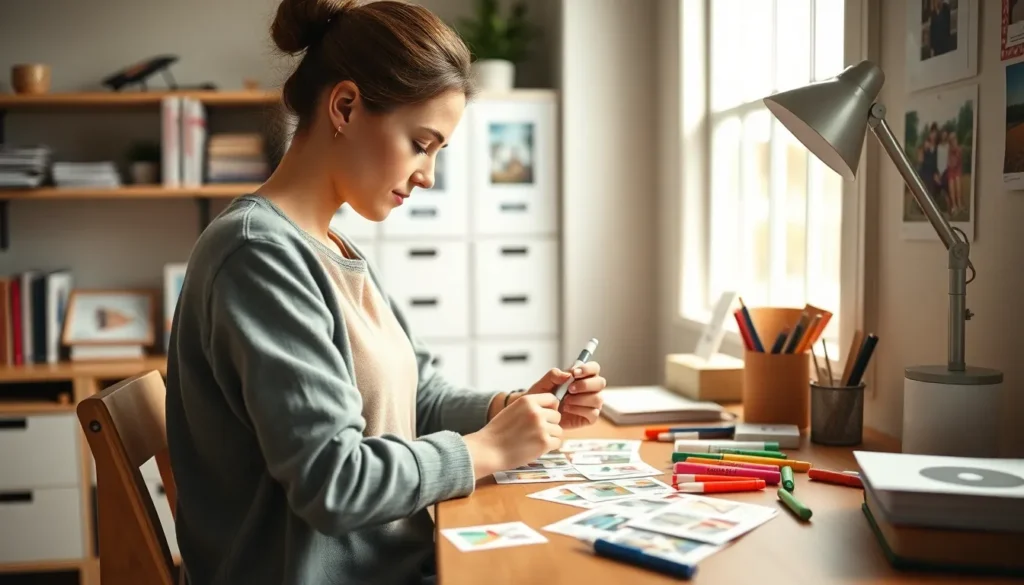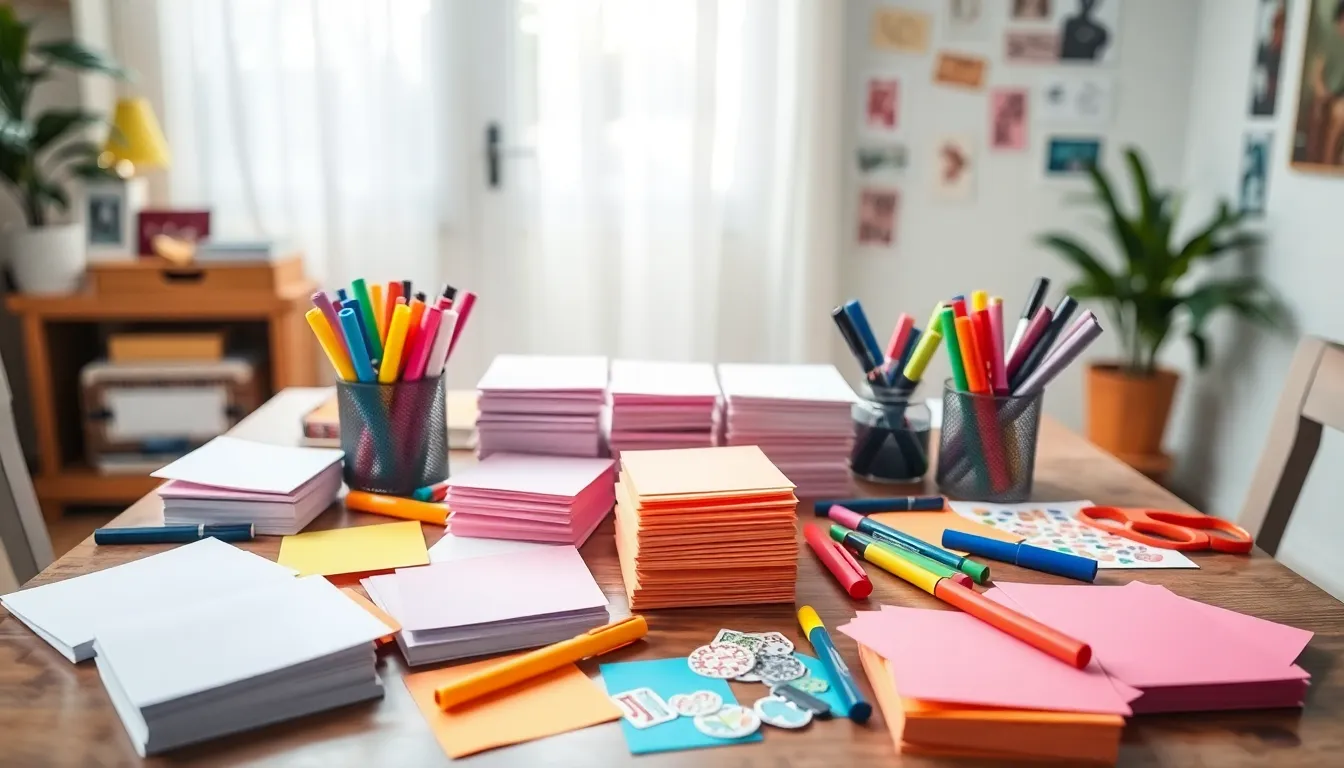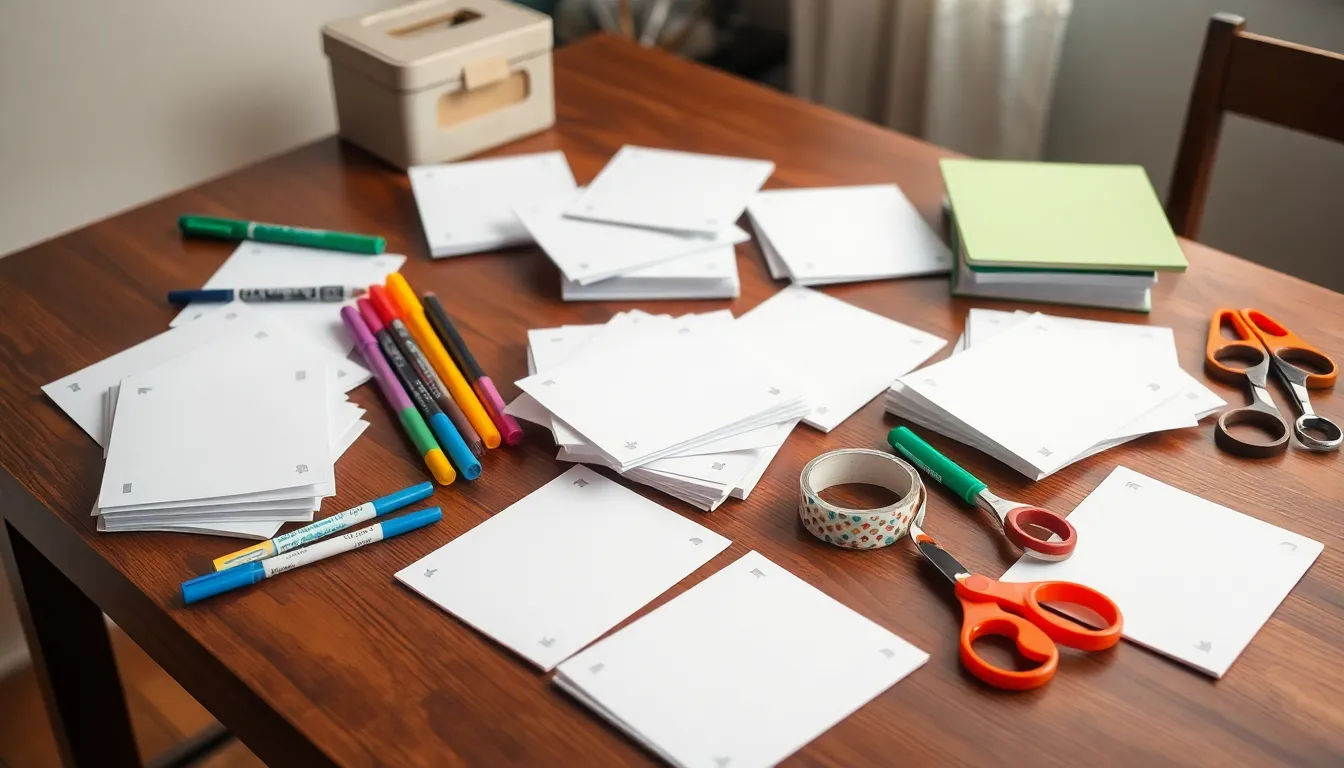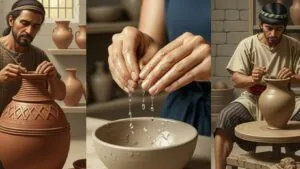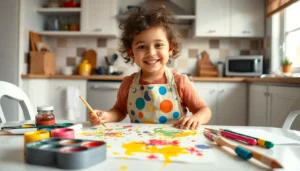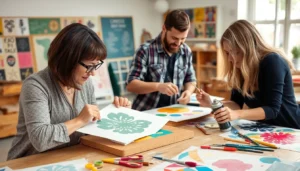Table of Contents
ToggleIn a world overflowing with information, retaining knowledge can feel like trying to catch confetti in a windstorm. Enter DIY flashcards—the superhero of study tools. They’re not just pieces of paper; they’re your personal knowledge ninjas, ready to slice through the clutter of facts and figures. Plus, they offer the perfect excuse to unleash your inner artist, even if your drawing skills are more “stick figure chic” than Picasso.
Understanding DIY Flashcards
DIY flashcards serve as an impactful study tool, simplifying the learning process and enhancing retention. These customizable cards allow users to organize information visually, making studying more interactive.
What Are DIY Flashcards?
DIY flashcards are self-made cards used for studying various topics. They typically include a question or prompt on one side and the answer or explanation on the reverse. Various materials can be used, such as index cards, paper, or digital platforms. Customized designs can reflect personal learning styles, making them more engaging. Creating these cards offers an opportunity for learners to focus on key concepts, ensuring essential knowledge is prioritized.
Benefits of Using DIY Flashcards
Using DIY flashcards presents several advantages for learners. Improved retention of information occurs when creating and using these cards actively engages the mind. Flexibility in content allows users to adapt flashcards to their specific study needs, supporting diverse learning styles. The visual format simplifies complex information, making it easier to memorize. Additionally, the creative element of designing cards promotes interest in the study process, enhancing motivation and reducing stress.
Materials Needed for DIY Flashcards
Creating DIY flashcards requires a few essential items to get started. Having the right supplies makes the process easy and enjoyable.
Essential Supplies
Index cards serve as the primary material for creating flashcards. Standard sizes, like 3×5 inches or 4×6 inches, provide ample space for writing prompts and answers. Markers or pens allow for clear and vibrant writing, making content easily readable. Highlighters also simplify content differentiation with colors. A ruler helps maintain neat lines during writing, enhancing overall presentation. Scissors are useful if individuals prefer creating unique shapes or sizes for their flashcards. Finally, a storage box or rubber bands keeps everything organized and accessible.
Optional Enhancements
Incorporating additional elements can elevate the DIY flashcard experience. Stickers provide decorative flair, adding a personal touch to the cards. Washi tape helps create stylish borders or patterns, making studying visually appealing. Printable templates are available online to accommodate different subjects or themes, offering structure and inspiration. Using laminating sheets can protect flashcards from wear and tear, ensuring longevity. Lastly, incorporating images or drawings can create associations, further aiding retention. These optional enhancements transform standard flashcards into engaging study tools.
How to Create Effective DIY Flashcards
Creating effective DIY flashcards requires attention to design and organization. Both elements play a crucial role in maximizing study efficiency and engagement.
Designing Your Flashcards
Choose colors thoughtfully to enhance visual appeal. Bright colors attract attention and help categorize subjects. Use clear, legible handwriting or print text to ensure readability. Include images or icons to represent concepts visually, making recall easier. Keep designs simple to avoid distraction, focusing on key information. Avoid cluttering the space, as less is often more effective. Consider using digital templates if preferred for a polished finish.
Organizing Information
Present information logically to enhance understanding. Start with clear prompts on one side, followed by comprehensive answers on the reverse. Group related concepts together to create thematic connections. Number flashcards for sequential study, promoting a structured learning experience. Utilize categories to separate different subjects, preventing confusion. Store cards in labeled boxes or binders for easy access. Regularly review and update cards to reflect new knowledge and improve retention.
Tips for Using DIY Flashcards
DIY flashcards enhance study efficiency through various techniques and proper maintenance. Implementing effective strategies ensures optimal use of these learning tools.
Study Techniques
Incorporating spaced repetition boosts retention. Review flashcards at increasing intervals to reinforce knowledge. Engaging in active recall strengthens memory; stating answers before flipping the card aids information retention. Grouping related topics fosters understanding, as learners can easily connect concepts. Creating and utilizing quizzes with flashcards can make studying interactive and enjoyable. Adding a variety of senses enhances learning; incorporating sound, visuals, or tactile elements creates a richer experience.
Maintaining Your Flashcards
Keeping flashcards organized maximizes their usability. Store cards in labeled boxes or binders to simplify access. Regularly updating content ensures flashcards reflect the current knowledge base. Checking for wear and tear allows for timely replacements. Frequent reviews prevent gaps in memory retention. Using digital tools for backup can protect flashcard data from loss. Reinforcing content through periodic assessments keeps information fresh and relevant.
Conclusion
DIY flashcards are a powerful tool for anyone looking to enhance their study routine. By combining creativity with effective learning strategies, they transform the studying process into an engaging experience. With the flexibility to tailor content to individual needs and learning styles, these cards not only boost retention but also make studying enjoyable.
Incorporating various materials and design elements encourages personal expression while reinforcing knowledge. Regularly updating and organizing flashcards ensures that they remain relevant and effective. Embracing DIY flashcards can lead to improved academic performance and a more satisfying learning journey.

